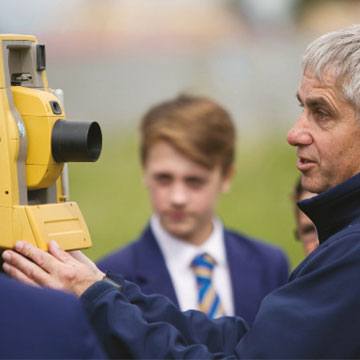- DataDrivenAEC
- Posts
- 🏗️ From Industry 4.0 to Construction 4.0: A Conversation with Andry on Robotization in AEC
🏗️ From Industry 4.0 to Construction 4.0: A Conversation with Andry on Robotization in AEC
Week 37 – Sep 13, 2025
“The construction industry is 50 years behind — it’s time to modernize or die.”
That’s the clear message from Andry Zaïd RABENANTOANDRO, a civil engineer and researcher whose work bridges robotics, AI, and sustainable building. I sat down with him to talk about how he’s translating innovations from manufacturing into real-world construction sites.
👷 What’s your focus right now?
I specialize in robotization in construction. My goal is to bring the principles of Industry 4.0 — automation, data, and AI — into the AEC world. We call it Construction 4.0.
This includes everything from digital fabrication and real-time data capture to new workflows that prioritize productivity, safety, and sustainability.
🧱 Why construction? What was the turning point?
During my studies, I compared two construction sites — one from 1967, another from 2018. What shocked me was how little had changed. The same messy processes, lack of automation, and poor ergonomics still dominated.
Contrast that with a visit I made to Toyota’s car plant in France. There, I saw streamlined production lines, robots, and systems designed for both efficiency and worker safety.
That comparison set the foundation for my work: how can we make construction smarter, safer, and faster?
🏡 Any real-world results?
Yes — one of the most exciting projects I led was the Empreinte House in Angers, France. Built using additive manufacturing, it was designed with printed formwork made from polyurethane insulation.
What makes it unique:
The insulation is the formwork
Concrete is cast into this printed shell
Walls are printed in 21 days, with insulation and structure integrated
We used BIM data to design, then fed it directly into the robot for printing. It’s a real example of data-driven construction from start to finish.
🧠 And what about AI?
AI and data are embedded throughout the process.
Predictive models adjust material mixes based on weather (e.g., humidity or wind)
Computer vision and LiDAR help align the robot’s path with the BIM model in real-time
Digital twins ensure that what’s built matches what was designed
LLMs and ML agents assist with planning, inspection, and deployment of robot fleets
We even use agents that suggest which type of machine and end-effector should be used for different construction sites based on complexity.
🔍 So what’s the biggest bottleneck?
It’s not the technology. It’s the system.
Most countries — like France — have strict building codes that weren’t designed for new methods like 3D printing. Every new technique must go through long approval processes and can only be used in limited pilot projects.
Add to that the lack of viable economic models, and you’ll see why adoption is slow, even when the tech is ready.
🔮 What’s next for you?
I’m between roles right now, but still active in research. I'm exploring:
Ontology-driven AI for structuring domain knowledge
Thermal comfort optimization with ML in buildings
Collaborative robotics for multi-vendor construction workflows
Ultimately, I want to help the AEC industry work like a true digital ecosystem — one where machines and humans coordinate in real time, with shared goals.
💬 Any advice for others working on digitalization in AEC?
Keep going. The industry is behind, not because of you — but because of inertia.
One of my favorite references is a report from the UK titled “Modernize or Die”. It applies today more than ever.
If the construction sector doesn’t evolve, tech companies will enter the space and disrupt everything. Just like Nokia failed to adapt to the smartphone era — traditional firms risk falling behind unless they embrace innovation.
So my advice: Believe in your work. Your time is coming.
Reference Links:




Reply